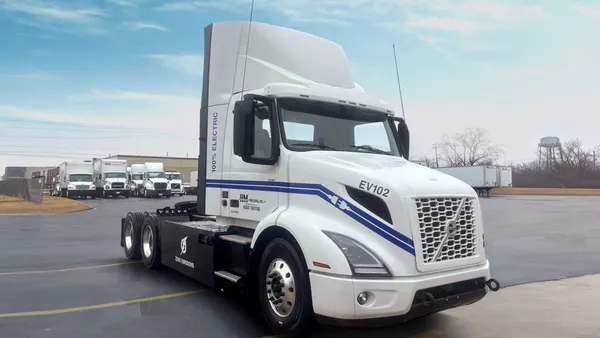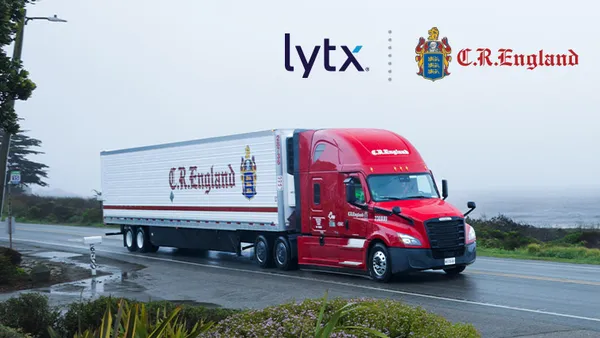In May 2024, the U.S. Environmental Protection Agency (EPA) announced its final proposed “Phase 3 Greenhouse Gas” program, imposing more stringent regulations for heavy-duty vehicles including buses, delivery vans and commercial trucks, beginning with the model year 2027 and setting new, stricter standards for model years 2028 through 2032. This plan aims to reduce carbon emissions significantly by 2045. As a result, the American Petroleum Institute (API) is developing a new heavy duty engine oil performance category: PC-12.
Personal opinions on these "green initiatives" aside, the industry must adhere to these standards. It is important to understand this new category, how low oil viscosity HDEOs are shaping PC-12, and how the right choice in engine oil can help with compliance, enhanced engine performance, and savings.
Low viscosity HDEOs and PC-12
The main way to lower CO2 levels is to improve fuel economy and new low viscosity (HDEOs) do just that, by burning less diesel.
On December 1, 2016, the American Petroleum Institute (API) introduced CK-4 and FA-4 (PC-11) to support fuel economy drivers and the introduction of new emissions reduction hardware.
These standards were eco-friendly and delivered improved engine aeration performance, wear, and deposit protection, oxidation control and shear stability over API CJ-4. API FA-4 also introduced fuel economy SAE XW-30 grades with high temperature, high shear (HTHS) viscosity range of 2.9cP–3.2cP for fleets’ on-highway applications.
To meet government fuel economy specs, a rapid shift towards SAE 10W-30 is expected. By 2029, SAE 10W-30 may account for roughly 40% of the market, with SAE 5W-30 making up about 10%. API’s proposed PC-12 category (first allowable use on 1/1/2027) is split in two categories, PC12A and PC-12B oils, aligning with the viscosity divide that exists today with API CK-4 and FA-4. This category will also bring key changes to engine and after-treatment system hardware.
The benefits of switching to low viscosity HDEOs
The good news - using lower viscosity oils does not compromise the durability of your engine life or the compatibility of the emissions system. These additives ensure lubricants can function at much lower viscosities and retain their protective properties even when properly extending draining intervals.
Switching your engine to lower viscosity oils yields numerous benefits including:
- Improved fuel economy.
- Meaningful cost savings (up to 3%).
- Improved engine durability, extended engine life, performance, and protection.
- Flexible formulation for heavy, medium, and light duty off-road, and commercial on-road vehicles, as well as stationary diesel engines.
- Most products are approved, or suitable, for use in engines by leading HD engine manufacturers.
- Multiple options, such as API CK-4 and FA-4 engine oils, to fit your unique fleet and HD operations.
Some HDEOs are guaranteed to reduce total operating costs, improve fuel efficiency, and improve carbon footprint. This results in less down time and more operating hours.
A balanced-formula HDEO may help reduce carbon emissions while enhancing engine performance
Premium API CK-4 heavy-duty engine oils like CITGO® CITGARD® 700 Synthetic Blend Heavy Duty Engine Oil SAE 10W-30 utilize a balanced approach to protect your engine and maintain your Diesel Particulate Filter (DPF) life.
Its balanced detergent additive package sets it apart: roughly equal amounts of Calcium and Magnesium detergents, versus many competitors’ Calcium-only detergent packages. Magnesium ash tends to be more porous and less dense than Calcium ash, which produces the following benefits:
- Reduced exhaust flow resistance
- Reduced back pressure (50%)
- Less workload on engine
- Improved fuel efficiency
Its detergent package also helps maintain engine cleanliness, protects the engine, and maintains DPF life through excellent oxidation control.
Good oxidation control results in the oil maintaining viscosity throughout the oil drain. In field trial, CITGARD 700 Synthetic blend 10W-30 tested at a 2.1% fuel efficiency savings for the new oil, and after 50,000 miles, the CITGARD 700 10W-30 still showed a 1.8% fuel efficiency savings.
As the category develops, we can expect PC-12 to deliver lubricants with increased wear protection, providing protection for engines working harder under increased operating temperatures. Since the saving benefits of low viscosity lubricants are considerable, lower viscosity grades should continue to grow.
Contact your supplier about choosing the right balanced formula in heavy-duty engine oils, such as CITGO’s premium line of CITGARD HDEOs, for your fleet operation and emissions compliance. The right HDEO could also help you streamline and simplify your inventory planning and supply needs.










